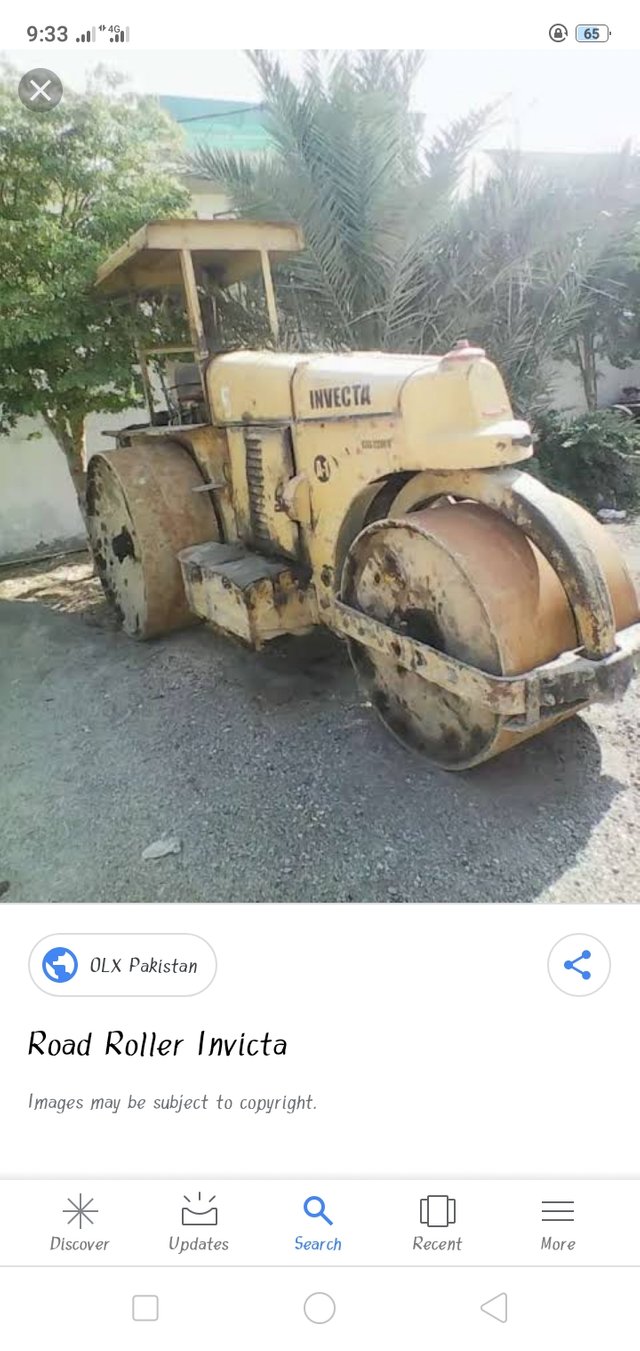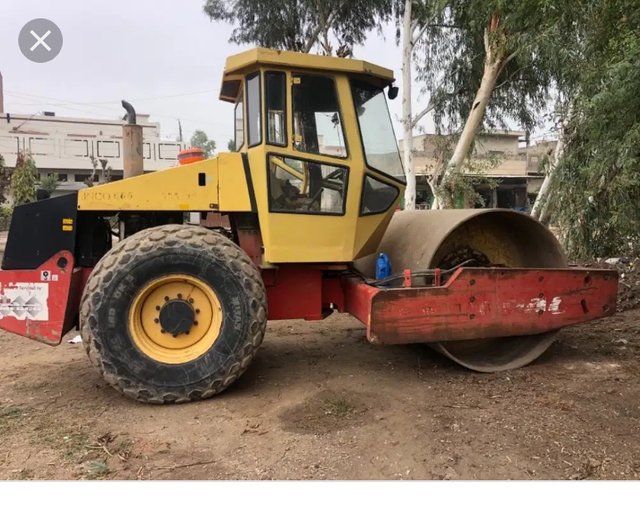The dairygame betterlife 09/04/2021
(((ROAD ROLLER)))road roller (sometimes called a roller-compactor, or just roller) is a compactor-type engineering vehicle used to compact soil, gravel, concrete, or asphalt in the construction of roads and foundations. Similar rollers are used also at landfills or in agriculture.Caterpillar soil compactor equipped with padfoot drum, being used to compact the ground before placing concrete. ((((HEsTRY))))The first road rollers were horse-drawn, and were probably borrowed farm implements (see Roller).
Since the effectiveness of a roller depends to a large extent on its weight, self-powered vehicles replaced horse-drawn rollers from the mid-19th century. The first such vehicles were steam rollers. Single-cylinder steam rollers were generally used for base compaction and run with high engine revs with low gearing to promote bounce and vibration from the crankshaft through to the rolls in much the same way as a vibrating roller. The double cylinder or compound steam rollers became popular from around 1910 onwards and were used mainly for the rolling of hot-laid surfaces due to their smoother running engines, but both cylinder types are capable of rolling the finished surface. Steam rollers were often dedicated to a task by their gearing as the slower engines were for base compaction whereas the higher geared models were often referred to as "chip chasers" which followed the hot tar and chip laying machines. Some road companies in the US used steamrollers through the 1950s. In the UK some remained in service until the early 1970s.
As internal combustion engines improved during the 20th century, kerosene-, gasoline- (petrol), and diesel-powered rollers gradually replaced their steam-powered counterparts. The first internal-combustion powered road rollers were similar to the steam rollers they replaced. They used similar mechanisms to transmit power from the engine to the wheels, typically large, exposed spur gears. Some users disliked them in their infancy, as the engines of the era were typically difficult to start, particularly the kerosene-powered ones.
Virtually all road rollers in use today use diesel power. (((( Roller Type))))Roller types Edit
Pedestrian-operated Edit
Rammer (bounce up and down)
Walk-behind plate compactor/light
Trench roller (manual unit or radio-frequency remote control)
Walk-behind roller/light (single drum)
Walk-behind roller/heavy (double drum)
Ride-on smooth finish Edit
Tandem drum (static)
Tandem drum (vibrating)
Single drum roller (smooth)
Pneumatic-tyred Roller, called rubber tyre or multi-wheel
Combination roller (single row of tyres and a steel drum)
Three point roller (steam rollers are usually three-point)
Ride-on soil/landfill compactor with pads/feet/spikes Edit
Single drum roller (soil)
4-wheel (soil/landfill)
3-point (soil/landfill)
Tandem drum (soil/landfill)
Other Edit
Tractor-mounted and tractor-powered (conversion – see gallery picture below)
Drawn rollers or towed rollers (once common, now rare)
Impact compactor (uses a square or polygon drum to strike the ground hard for proof rolling or deep lift compacting)
Drum roller with rubber coated drum for asphalt compaction
Log skidder converted to compactor for landfill
Wheel loader converted to compactor for landfill
Drum types Edit
Drums are available in widths ranging from 610 to 2,130 millimetres (24 to 84 in).
Tyre roller types Edit
Tyre rollers are available in widths ranging up to 2.7 metres (8.9 ft), with between 7 and 11 wheels (e.g. 3 wheels at front, 4 at back): 7 and 8 wheel types are normally used in Europe and Africa; 9 and 11 in America; and any type in Asia. Very heavy tyre rollers are used to compact soil.
Variations and features Edit
On some machines, the drums may be filled with water on site to achieve the desired weight. When empty, the lighter machine is easier and cheaper to transport between work sites. On pneumatic tyre rollers the body may be ballasted with water or sand, or for extra compaction wet sand is used. Modern tyre rollers may be filled with steel ballast, which gives a more even balance for better compaction.
Additional compaction may be achieved by vibrating the roller drums, allowing a small, light machine to perform as well as a much heavier one. Vibration is typically produced by a free-spinning hydrostatic motor inside the drum to whose shaft an eccentric weight has been attached. Some rollers have a second weight that can be rotated relative to the main weight, to adjust the vibration amplitude and thus the compacting force.
Water lubrication may be provided to the drum surface from on-board "sprinkler tanks" to prevent hot asphalt sticking to the drum.
Hydraulic transmissions permit greater design flexibility. While early examples used direct mechanical drives, hydraulics reduce the number of moving parts exposed to contamination and allows the drum to be driven, providing extra traction on inclines.
Human-propelled rollers may only have a single roller drum.
Self-propelled rollers may have two drums, mounted one in front of the other (format known as "duplex"), or three rolls, or just one, with the back rollers replaced with treaded pneumatic tyres for


You have written your dairy game very well and very well written. I have fully rated your post. I like your post very much.
You had a great day And your dead game that you have seen looks very good. I have rated your deepest read completely